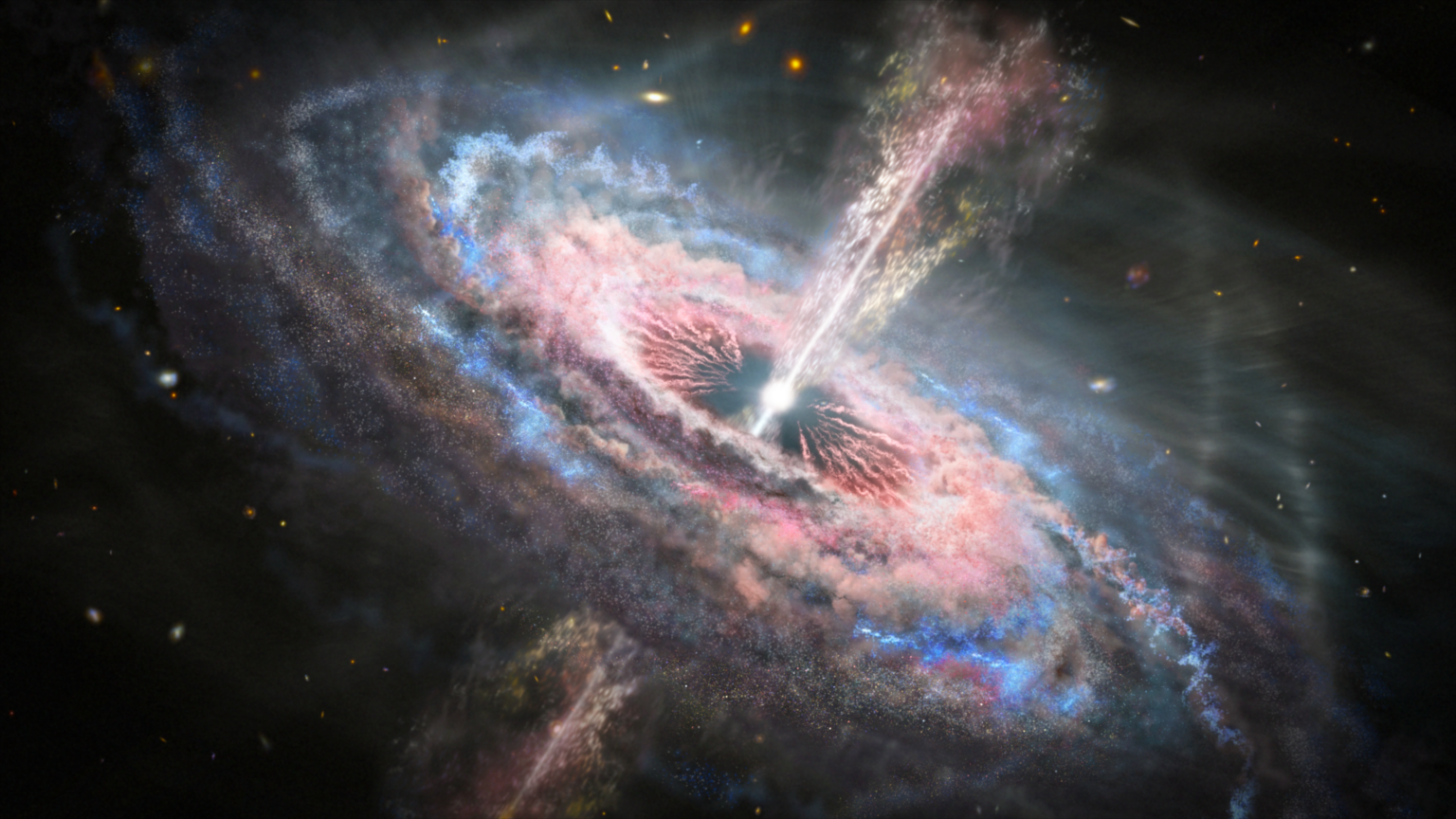Astronomers have discovered a cluster of galaxies next to an extremely bright quasar. We see it as it was at the beginning of the existence of the universe. It is noted for its unusual massiveness and is the largest of all discovered at such a distance.

Protocluster of galaxies
Astronomers from the Steward Observatory in Tucson, Arizona, and elsewhere report the discovery of a new massive protocluster. This structure was found around a bright quasar known as J0910-0414.
Galactic clusters contain hundreds to thousands of galaxies interconnected by gravity. They are the largest gravitationally bound structures in the universe and can serve as excellent laboratories for studying the evolution of stellar systems and the evolution of time and space.
Astronomers are particularly interested in studying the protoclusters of galaxies, the progenitors of clusters. Such objects detected at high redshifts (more than 2.0) can provide important information about the early stages of the universe’s development.
What did the astronomers see?
Recently, a team of astronomers led by Feige Wang from Steward Observatory used ultra-modern instruments to observe J0910-0414, a bright quasar with a redshift of 6.63. This object contains one of the largest (about 3.6 billion solar masses) supermassive black holes with such a high redshift. Because of this, it is a good place to search for galaxy clusters in the early universe.
The observations revealed a protocluster surrounding J0910-0414, in the spectrum of which there are at least three carbon [C II] lines and 12 Lyhman-alpha emitters (LAEs) at the redshift of the quasar. The images also show a double-peaked LAE surrounded by a black hole.
According to the study, the structure found is one of the most oversaturated known in the early universe. Moreover, the current mass of this structure is estimated at about 6.9 quadrillion solar masses — that is, three times more than the nearby Coma cluster. This means that the protocluster mentioned in the scientists’ article is the most massive of all found at a redshift above 6.0.
Conclusions of scientists
Summarizing the results, Wang’s team emphasized that detecting galaxy overdensities by targeting quasar fields using both the ALMA telescope and narrowband observations is effective. This was proved by the discovery of a new protocluster.
“Future ALMA mosaic observations, wide-field narrow band imaging, and JWST observations of quasars in the EoR [Epoch of Reionization] will allow us to not only identify galaxy overdensities in the EoR but also study the environmental dependence of galaxy evolution,” the scientists conclude.
According to phys.org
Follow us on Twitter to get the most interesting space news in time
https://twitter.comne/ust_magazine


